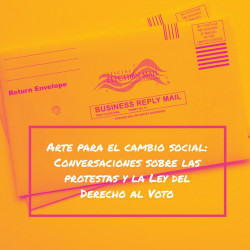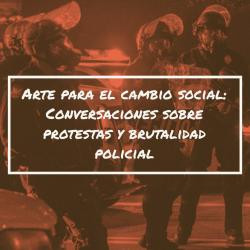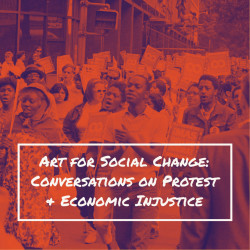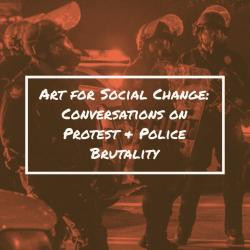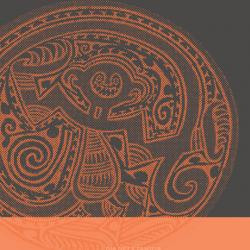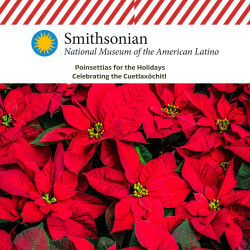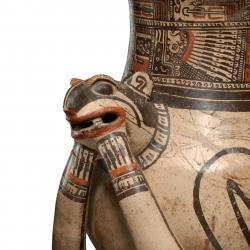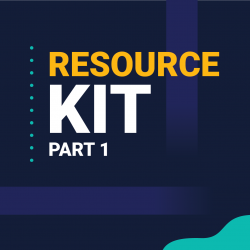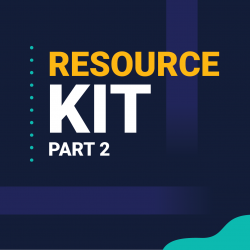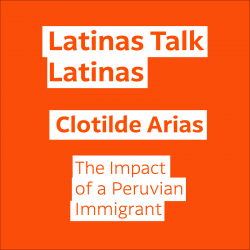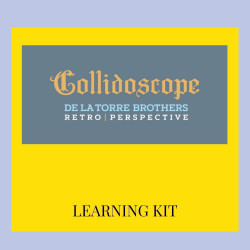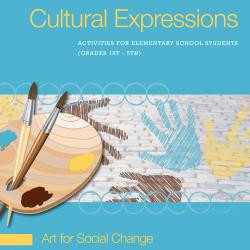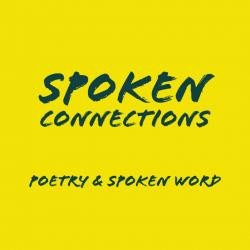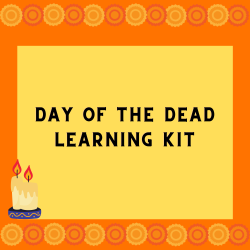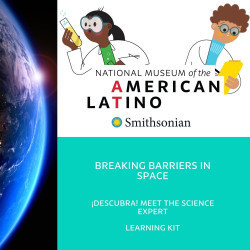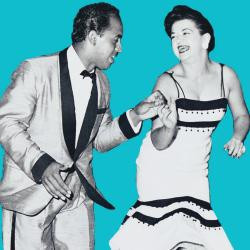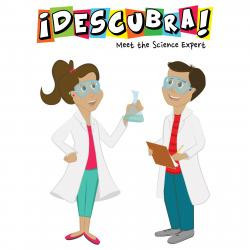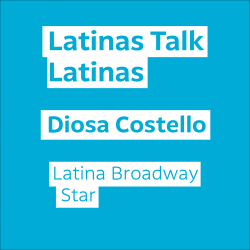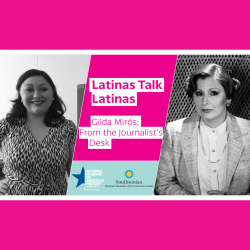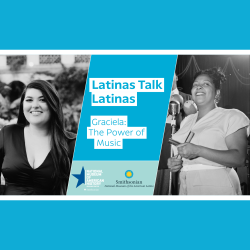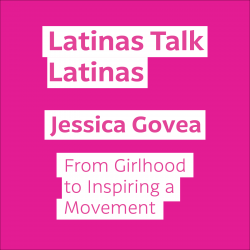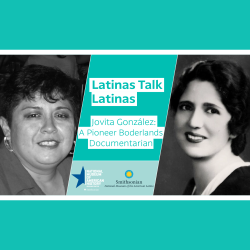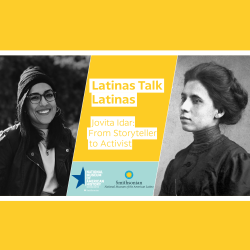<p><br><strong>Introduction: </strong>What is <em>Civil Intersections</em><strong>?</strong> </p>
<p><em>Civil Intersections</em>: Asian-Latino Solidarity Movements and Cross-Cultural Dialogue is a new educator resource kit and capacity-building workshop developed by the Smithsonian’s Latino Center (SLC) and Asian Pacific American Center (APAC). Entering its pilot year (2021) with Cobb County School District in Georgia, <em>Civil Intersections</em> strives to serve as a multi-year effort in partnership with school districts across the United States. SLC and APAC educators are aiming to present US Latino and Asian American regional and national histories to middle and high school educators who are looking to weave first-voice Latino and Asian American narratives and primary source materials into their curriculum. For its pilot year, <em>Civil Intersections</em> centers its resource kit and workshop on the story of the Farmworkers’ Movement and the organizers behind it, Larry Itliong, Cesar Chavez, and Dolores Huerta. The story of the Farmworker’s Movement and the leaders behind it is an important story in American history because it secured better pay, established workers’ rights to organize, and created better working conditions on many farms. </p>
<p>While this history took place in Delano, California, it has national resonance as many Latino and Asian migrants and immigrants are working on farms and other industries across the United States to make a living. According to the organization Farmworker Justice, an estimated 2.4 million farmworkers work on farms and ranches in the United States in 2015-2016—of this number, 49% of farmworkers were immigrants, and 75% of the workforce were foreign-born. Women make up 32% of the agricultural workforce, and there have been increasing numbers of new migrants arriving in the U.S. from indigenous communities in Mexico and Guatemala. According to the US Department of Agriculture, in 2017, a higher proportion of Asian producers in the US identified as female, and younger on average, showing there are many farmers are at the beginning of their careers. Asian producers account for 0.7% of the country’s 3.4 million food producers and are primarily located in California and Hawaiʻi. Woven into these numbers are historic and contemporary stories of migration, immigration, belonging, identity, and equity. The legacy and impact of the Farmworkers’ Movement can be seen today through better pay and working conditions—however, inequities that Latino and Asian workers face in farming, and other industries, persist today. The COVID-19 pandemic unraveled issues of race, belonging, workers’ rights and safety, access to healthcare, and equity. The impacts of the pandemic have disproportionately impacted Latinx farmworkers in the US, who are deemed essential workers unable to practice preventative measures, such as staying at home and working from home. As we reflect on the history of the Farmworkers Movement, how can we bridge the past to current events impacting communities today? What have learned, and not learned, from the Farmworkers’ Movement, and who are the leaders today fighting for equity and justice? How can the practice of civil discourse lead to change? </p>
<p><em>Civil Intersections</em> aims to spark new conversations with educators and students </p>
<p>We hope that this resource kit and methodology leads to new conversations between educators and students in the classroom, and that it sparks new ideas for bringing first-voice narratives into the classroom. We also hope that the story of the Farmworkers Movement inspires users to think about the humanity of Asian and Latino communities throughout the United States, not solely through a contributions lens, but through a lens of belonging, identity, and equity, with all of its triumphs and challenges. </p>
<p>How do I use this resource kit? The Civil Intersections resource kit comes in two collections. The first collection, part one, dives into historical context of the Farmworkers Movement, and the second collection, part two, dives into the kit’s six-step methodology. As you use both collections, look for a yellow paperclip in the left-hand corner of the tiles. The paperclip indicates that there is more information in the tile--simply click on the tile to see what more information is included. Some tile annotations include discussion questions, or more information about the step or resource. There is a specific order for how to navigate each collection--start with the top left tile and move left to right, moving down row by row. </p>
<p>Overall, the two collections include access to: </p>
<ul><li>Primary source materials from the Smithsonian Institution and community organizations across the United States, </li><li>Multimedia, such as short videos, </li><li>Images of objects, photographs and other archival materials from the Smithsonian Institution and community organizations, </li><li>A six-step methodology that focuses on reflection, transferable skills, and more, </li><li>Discussion and reflection questions and worksheets that you can use with colleagues and students </li><li>Strategies for using and applying primary source materials into existing curricula, </li><li>Ways to send in your feedback to the project’s developers. </li></ul>
<p>Civil Intersections is an ongoing project, edited and informed by educators like you. We welcome feedback on the design, framing, and usability of this methodology and resource kit at any time. </p>
<p>If you would like to contact the organizers of this kit to discuss its content and approach, please email: </p>
<ul><li>Emily Key (Director of Education, Smithsonian Latino Center) at <a href="mailto:KeyE@si.edu" target="_blank" rel="noreferrer noopener">KeyE@si.edu</a> </li><li>Andrea Kim Neighbors (Manager of Education Initiatives, Smithsonian Asian Pacific American Center) at <a href="mailto:NeighborsA@si.edu" target="_blank" rel="noreferrer noopener">NeighborsA@si.edu</a> </li></ul>
<p>With your feedback and insights, we will continue to develop and refine this methodology and accompanying resources based on your feedback. We aim to make Smithsonian and community-created resources usable and relevant for educators across the United States so that a fuller American story may be shared with students and future generations. </p>
<p>This resource kit received federal support from the Latino Initiatives Pool, administered by the Smithsonian Latino Center. </p>
<p> </p>

Smithsonian Latino Museum
51
 Smithsonian Latino Museum
Smithsonian Latino Museum
 Smithsonian Latino Museum
Smithsonian Latino Museum
 Smithsonian Latino Museum
Smithsonian Latino Museum
 Smithsonian Latino Museum
Smithsonian Latino Museum
 Smithsonian Latino Museum
Smithsonian Latino Museum
 Smithsonian Latino Museum
Smithsonian Latino Museum
 Smithsonian Latino Museum
Smithsonian Latino Museum
 Smithsonian Latino Museum
Smithsonian Latino Museum
 Smithsonian Latino Museum
Smithsonian Latino Museum
 Smithsonian Latino Museum
Smithsonian Latino Museum
 Smithsonian Latino Museum
Smithsonian Latino Museum
 Smithsonian Latino Museum
Smithsonian Latino Museum

